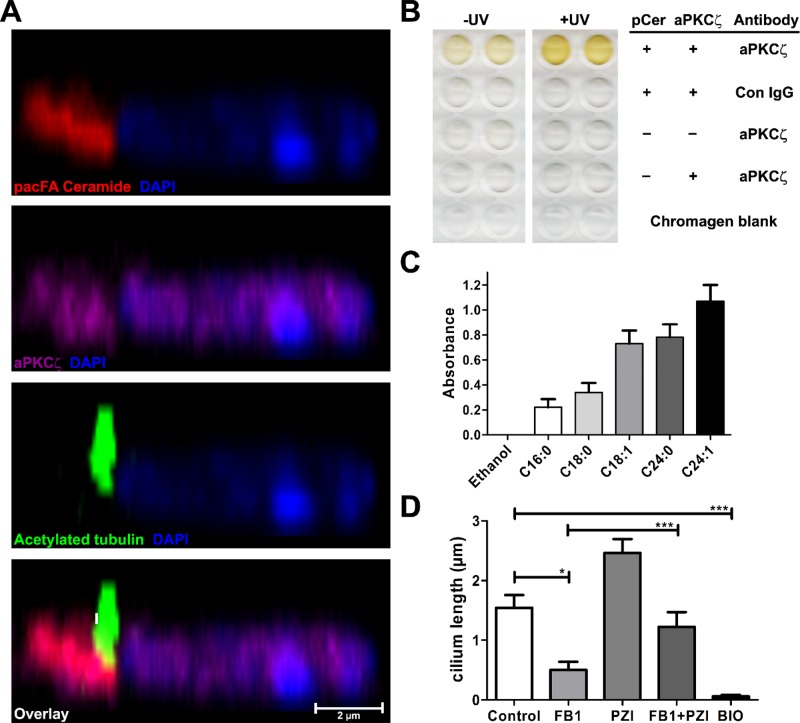FIGURE 7:
Ceramide binds to aPKCζ, whose inhibition leads to cilium length extension. (A) pacFACer was UV cross-linked to protein in primary cultured ependymal cells, linked to Alexa Fluor 594 azide (red), and labeled with anti-aPKCζ (magenta) and anti–acetylated tubulin (green) antibodies. Scale bar, 2 μm. (B) pacFACer was coated on ELISA plates and recombinant aPKCζ cross-linked by UV (365 nm) radiation. Presence/absence of pacFACer (pCer) and recombinant aPKCζ along with primary antibody used. (C) Indicated ceramides were coated on ELISA plates and bound to recombinant aPKCζ, and binding was quantified by development with anti-aPKCζ IgG and anti-rabbit IgG-HRP. Mean ± SEM, n = 3. (D) Incubation of ependymal cells (24 h) with FB1 (10 μM) reduces cilium length, whereas addition of aPKCζ inhibitor PZI (10 μM) leads to extension of untreated or (partial) restoration of FB1-treated cilia. The GSK-3β inhibitor BIO (2 μM) obliterates cilia. Data presented show mean ± SEM, n = 5, *p < 0.05, ***p < 0.001 (one-way ANOVA with Bonferroni post hoc test).

